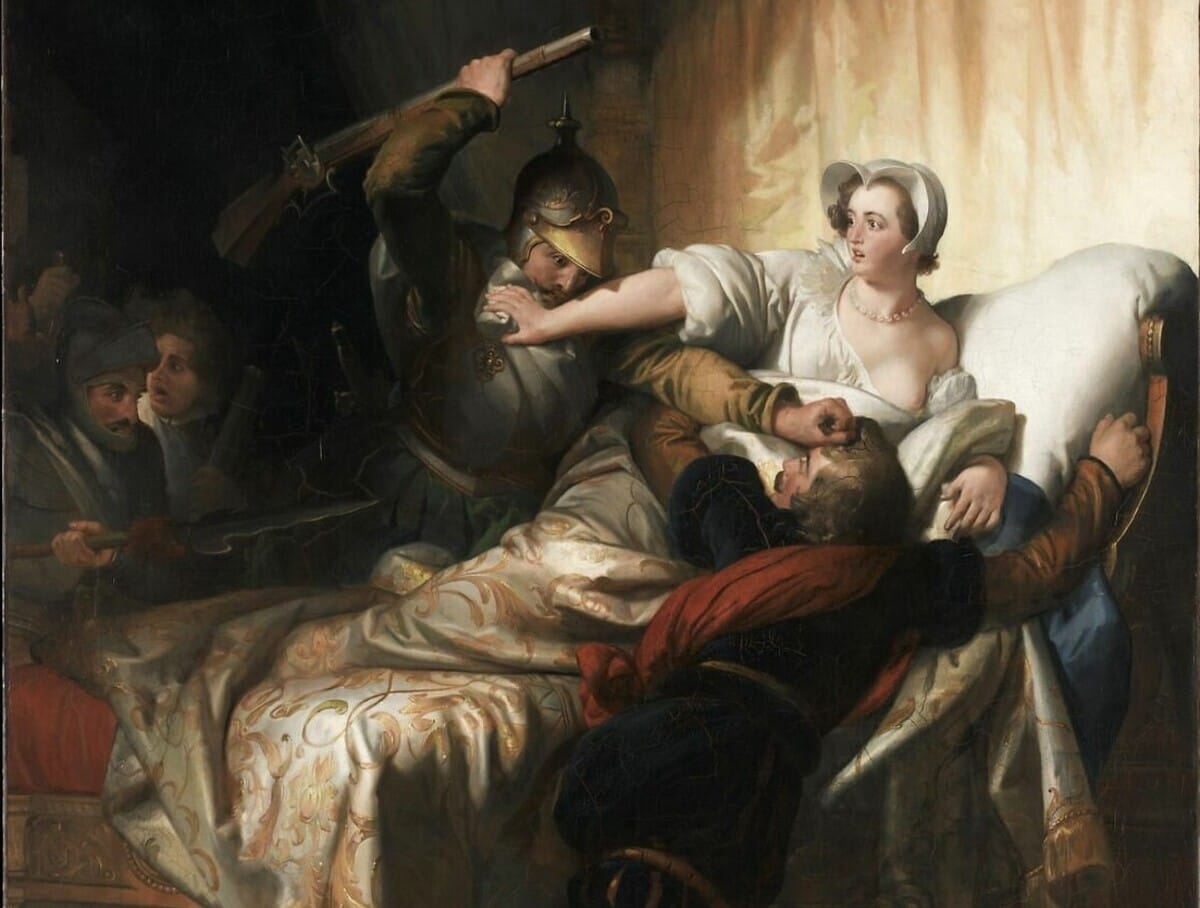In blogs and historical articles you can often find a story about how Margaret of Navarre, the wife of the future King of France Henry IV, kept the severed head of her lover. We decided to check how true this story is.
Mention of the episode with the head of La Mole, executed in 1574, is found in almost every article devoted to the biography of Queen Margot. For example, it is on website magazine “Dilettant”: “De La Mole’s head was cut off on the Parisian Place de Greve, which, according to rumors, Margarita kept in alcohol.” This story comes across in different forms. LiveJournal and in "VKontakte": alone writethat Margarita bought La Mole’s head from the executioner and buried it, other — that she subsequently kept the embalmed head in her possession.
The two main sources that influence the spread of this story are fiction. Firstly, this is Stendhal's novel The Red and the Black (1830). The main character's beloved is called Matilda de La Mole, and her family honors the memory of an ancestor who was executed in 1574. Stendhal has this episode stated like this: “Queen Margaret of Navarre, secretly hiding from everyone in some house on the Place de Greve, dared to send a messenger to the executioner and demand from him the death’s head of her lover. And when midnight came, she took this head, got into her carriage and went to the chapel, which is located at the foot of the Montmartre hill, and there she buried it with her own hands.”
The second fictional source is the novel by Alexandre Dumas “Queen Margot"(1845). According to the plot, after the execution of La Mole, Margarita bought the head of her lover from the executioner: “Margarita put La Mole’s head, which seemed even more beautiful in this frame of velvet and gold, in a bag embroidered with pearls and perfumed with the finest perfume. And this beauty had to be preserved thanks to the special composition that was used in that era for embalming royalty.”

La Mole indeed existed. True, he was not a Huguenot, but a believing Catholic. In addition, Dumas greatly rejuvenated him: at the time of the events described, he was in his fifties. Mentions him in his memoirs and Margarita herself - however, very laconically: “La Mole and the Comte de Coconnas paid with their lives.”

But neither Margarita nor most of her contemporaries have a word about La Mole’s head, which the queen allegedly kept (or buried after execution). Pierre de Bourdaille, lord of Brantôme, who left a detailed essay about the life of Margarita, also does not mention La Mole.
Nevertheless, during Margarita’s lifetime, a text was published in which this episode appears. This is a Huguenot pamphlet Le divorce satyrique (Satirical divorce), entirely dedicated to the love affairs of the queen. It was published in 1607 - by that time Henry IV had already divorced Margaret, who was unable to have children, and married Maria de Medici. This pamphlet wrong attributed to the poet and writer Agrippa d'Aubigné, in a rather crude manner describes the adventures of a person of royal blood, endowing her with dozens of lovers.

In particular, there is an episode with the head of La Mole. In the pamphlet is toldthat the heads of La Mole and Kokonas were to be put on public display, but at night Margarita took La Mole's head and buried it in the chapel of Saint-Martin at the foot of Montmartre, and then bitterly mourned her lover. Everything is like Dumas. This allows us to determine where the authors of two famous novels got this story from. But this pamphlet can hardly be considered a reliable source. It was written by Margaret’s enemies, who despised her for her political intrigues and inability to give children to Henry IV, and the text itself is filled with obscene rumors - for example, about the Viscount Turenne, who allegedly fell out of favor with Margaret due to the “disproportionate size of some parts of the body.”
Thus, the story about the head of her lover, which Margarita allegedly kept, is not credible. It was published by the queen's enemies in a satirical pamphlet, and then used by authors of works of fiction.
Cover photo: Alexandre Fragonard. Scene in the bedroom of Marguerite Valois on St. Bartholomew's Night. 1836 / Wikimedia Commons
Most likely not true
- Myths and truth in Dumas’ novel “The Three Musketeers”
- Is it true that the expression “spreading cranberries” was first used by Alexandre Dumas the father?
If you find a spelling or grammatical error, please let us know by highlighting the error text and clicking Ctrl+Enter.






